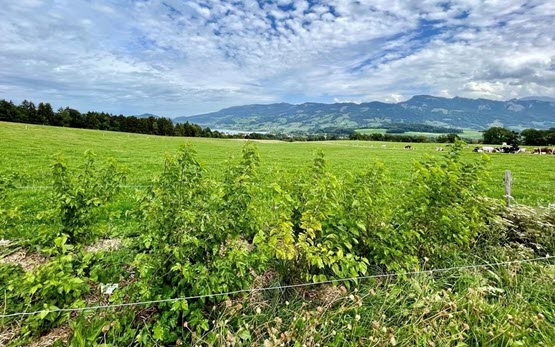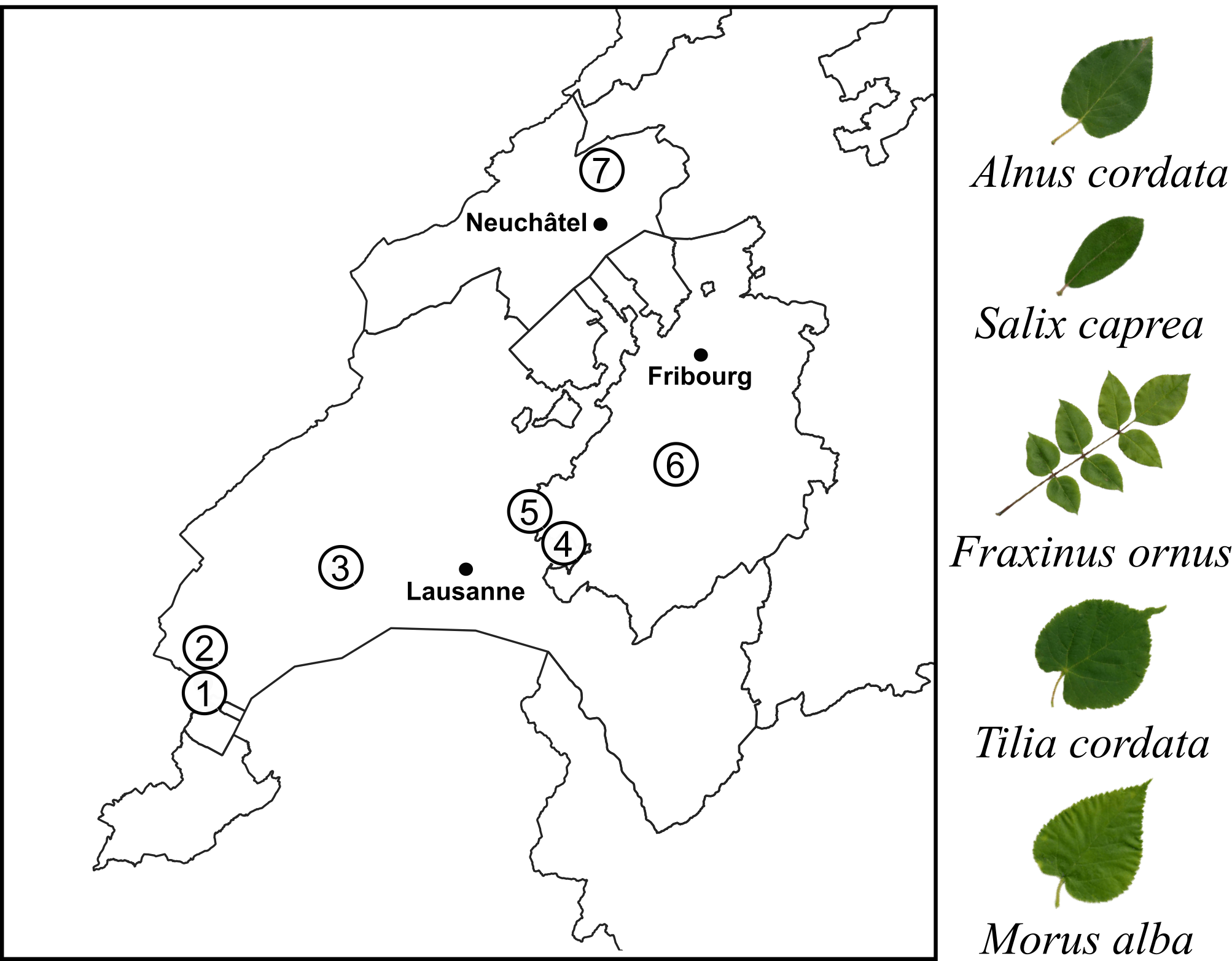Climate change is an important factor in yield and forage quality losses, mainly due to the increased periods of drought during the growing season. Agroforestry for forage production could be a promising solution, particularly during the summer when the risk of reduced forage production from drought is highest. The #AgroForageTree project aims to test the potential of fodder tree hedgerows for providing supplementary tree leaf-based forage in summer.
Fodder tree hedgerows
Numerous tree species better withstand drought than herbaceous species since their deeper root systems allow them to access water in deeper soil layers. The leaves of certain tree species such as ashes, mulberries and willows may possess excellent digestibility and nutritional value for livestock.
In addition to the direct positive impacts on animal nutrition, health and gas emissions for which they are responsible, fodder tree hedgerows provide multiple ecosystem services such as increasing biodiversity (for example, plant, insect and bird diversity) and carbon storage as well as reducing nutrient leaching. However, a more holistic and interdisciplinary study of agroforestry systems is warranted, as the complex interactions between specific management techniques, productivity, sustainability and the various ecosystem services associated with agroforestry for fodder production have scarcely been studied to date.
Objectives of the project
The AgroForageTree project (SNSF project n°315230_215044) aims to evaluate the potential of fodder tree hedgerows for providing supplementary tree leaf-based forage (in addition to grass-based forage) in summer. The project revolves around five main objectives:
- Monitor the survival, annual growth, carbon uptake, water-use efficiency and photosynthetic activity of five selected forage-tree species on different permanent pasture sites along an altitudinal and climatic gradient;
- Determine the leaf production, nutrient content and digestibility of five fodder tree species and their variation over the growing season along the altitudinal and climatic gradient;
- Study the impact of fodder tree hedgerows on biodiversity and ecosystem services over the years following the establishment of the agroforestry system;
- Evaluate the palatability of five fodder tree species and their selection by various categories of livestock as well as methane emissions and the absorption and digestibility of the nutrients resulting from the tree leaf-based diet;
- Evaluate the profitability of fodder tree hedgerows at plot and farm level compared to pure grassland.
The growth of the trees, their yields and forage quality, their palatability and selection by different livestock categories, as well as the impact of the fodder tree hedgerows on biodiversity and ecosystem services will be evaluated over a four-year period on seven farms in Western Switzerland (doctoral thesis of Julie Botzas-Coluni, 2024–2028). These data will allow us to estimate the cost-efficiency of fodder tree hedgerows at farm level, bearing in mind the forecasted reduction in grass-based forage yields during summer in the coming decades.








